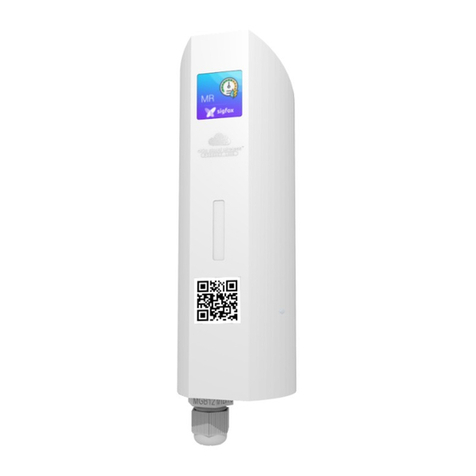2
ATIM_ACW-LVL_UG_EN_V0.2.docx
Table of contents
THIS USER GUIDE IS APPLICABLE TO THE FOLLOWING REFERENCES .................................................................................................. 4
DOCUMENT VERSION HISTORY ........................................................................................................................................................... 4
DISCLAIMER......................................................................................................................................................................................... 4
TRADEMARKS AND COPYRIGHT........................................................................................................................................................... 4
DECLARATION OF COMPLIANCE.......................................................................................................................................................... 5
ENVIRONMENTAL RECOMMENDATIONS ............................................................................................................................................ 5
EXPLOSIVE ATMOSPHERE................................................................................................................................................................................ 5
ENVIRONMENT............................................................................................................................................................................................. 5
RADIO......................................................................................................................................................................................................... 6
PRELUDE.............................................................................................................................................................................................. 7
TECHNICAL SPECIFICATIONS................................................................................................................................................................ 8
PRODUCT ........................................................................................................................................................................................... 8
SENSORS’SPECIFIC............................................................................................................................................................................... 8
CASING ................................................................................................................................................................................................ 9
FOOTPRINT......................................................................................................................................................................................... 9
FASTENERS ......................................................................................................................................................................................... 9
PRODUCT IDENTIFICATION .................................................................................................................................................................. 10
INSTALLATION AND DISMANTLING ........................................................................................................................................................ 11
INSTALLATION ................................................................................................................................................................................... 11
OPERATING ....................................................................................................................................................................................... 12
OPERATING MODES............................................................................................................................................................................ 12
PRODUCT START-UP........................................................................................................................................................................... 12
PRODUCT COMMISSIONING................................................................................................................................................................. 13
BLUETOOTH ENABLING /DISABLING..................................................................................................................................................... 14
DEEP SLEEP....................................................................................................................................................................................... 14
ACW CONFIGURATOR ....................................................................................................................................................................... 15
COMPATIBLE CONFIGURATOR VERSION ................................................................................................................................................. 15
ACW-LVL SETUP .............................................................................................................................................................................. 16
Emission period and samples in the frame ...................................................................................................................................... 16
Keep alive frame period .................................................................................................................................................................... 16
Frame timestamp.............................................................................................................................................................................. 17
Product clock ..................................................................................................................................................................................... 17
Product versions ................................................................................................................................................................................ 17
Sensors configuration ....................................................................................................................................................................... 17
Distance threshold setup .................................................................................................................................................................. 17
Setup validation................................................................................................................................................................................. 17
FACTORY SETTINGS ............................................................................................................................................................................ 18
UPDATES OF ACW ............................................................................................................................................................................ 19
FRAMES FORMAT.............................................................................................................................................................................. 20
SIGFOX AND LORAWAN .................................................................................................................................................................... 20
Classic frame ..................................................................................................................................................................................... 20
Measurement frame ......................................................................................................................................................................... 21
Alert frame ........................................................................................................................................................................................ 22
Error frame ........................................................................................................................................................................................ 23
EXAMPLES OF FRAMES........................................................................................................................................................................ 24
Measurement frame ......................................................................................................................................................................... 24




























